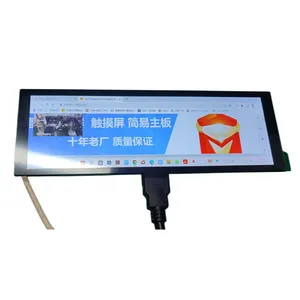
High Quality Fuel Dispenser Lcd Display Factory Direct Sales Of Various Display Lcd Screen 4/5/6/7/8/10/12digit Segment Lcd


7.9-inch LCD Touch Screen With Integrated Driver Board For 400 * 1280 Resolution High-definition Raspberry Pie Display Screen





















Liquid Crystal Display displays, also known as “LCD screens,” have become ubiquitous in modern technology. They offer clear, crisp images and consume less power than traditional CRT displays, making them a popular choice for many applications, including televisions, rack-mount monitors, smartphones, and more.
LCD displays control the light passing through a layer of liquid crystals. Applying an electric current to crystals allows the light to create the desired image. Thus, the LCD panel provides accurate color reproduction, a high contrast ratio, and a sharp image.
To begin, assemble the right tools. A screwdriver set, a spudger, and a new LCD screen are typically required. Remember to follow the manufacturer's instructions, as the process can vary between laptop models.
To replace an LCD laptop screen, remove the old screen first. Doing so typically involves removing LCD parts such as screws, releasing latches, and disconnecting cables that connect the screen to the rest of the laptop. Once removed, connect the cables from the new LCD screen to the computer.
Next, install the new LCD monitor in the laptop. This step typically involves aligning the mounting brackets with the screw holes and securing the screen with screws. Finally, reconnect the cables and test the new screen to ensure it's working correctly.
TFT stands for Thin-Film Transistor and refers to a type of LCD (Liquid Crystal Display) technology used in flat-panel displays. TFT displays are commonly used in computer monitors, laptops, smartphones, and other devices that require a high-quality display.
The key advantage of TFT technology is its ability to produce sharp and clear images, even in low-light conditions. TFT screens are also highly energy efficient and offer excellent viewing angles, making them a popular choice for portable devices and displays that require a wide viewing area.